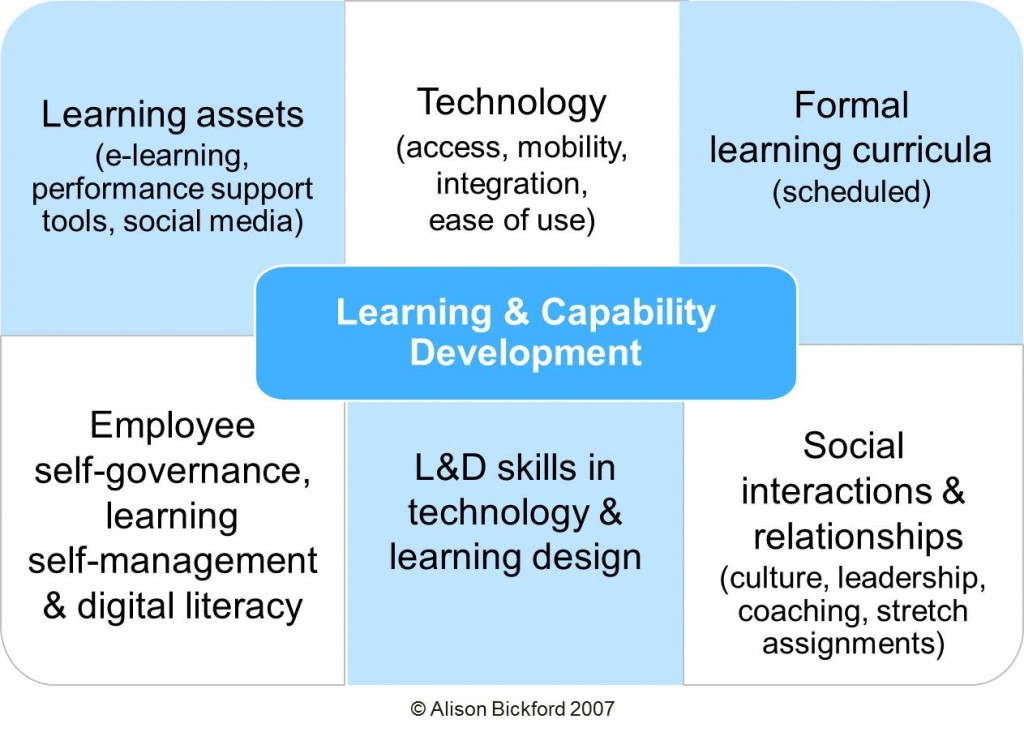Part of my job is to provide e-learning strategy support to clients. I have a number of processes for this kind of engagement, and E-Learning Academy members to have access to an e-learning course on Strategy, and a number of other tools and resources.
Top line tips for developing an e-learning strategy
1. Talk with other organisations about their strategy – their reasons for implementing a strategy, what’s worked, what hasn’t, and the resources required to implement and sustain their strategy.
2. Conduct 1:1 or focus interviews with the e-learning strategy touch-points in your organisation:
- Business strategy requirements today and future e.g. responsiveness, competition, changing consumer demands, legislation changes
- Human capability requirements today and future e.g. retiring workforce, Gen Y retention, staff ability to ‘unlearn’, ‘relearn’ and manage rapid information, cultural and climate readiness to self-manage learning and participate in a social network
- Manager requirements e.g. getting new staff upskilled as quickly as possible, helping managers in their role as coach
- End-user expectations e.g. perception of e-learning, social media – what makes learning technologies useful and easy to use, engaging and reusable
- IT e.g. pipeline technologies, challenges to standard operating environment
- Information management and/or knowledge management e.g. knowledge retention and information maintenance and renewal
3. Learning technologies and informal learning in a strategy has removed the role demarcation between learning and development, knowledge management, information management and information technology. Your strategy should ideally be all encompassing. Consultation with all areas of the business is paramount.
4. Ask yourself the bigger question Do we have everything in place to enable learning to effectively and efficiently occur in our organisation? All six elements in the figure below need to be addressed for a strategy to succeed.
5. Your first priority solution may not necessarily be a LMS for e-learning courses. It my be social media for project team sharing and collaboration, or a video library to manage expert knowledge. Be sure of your strategic priorities.
6. When you have decided upon your strategic e-learning solution, be sure to prioritise quality over cost wherever you can. A poor user experience will railroad your strategy as quickly as you implemented it.
7. Your strategy needs to be translate into a tangible Action Plan. Your action plan will need to encompass a change plan and communication plan. Your earlier focus group outcomes will help you to develop this.
Useful resources for e-learning strategy development
Jane Hart, in particular Learning in the Social Workplace
Bersin and Associates, in particular the Enterprise Learning Framework
Please feel free to comment and share your approach to developing an e-learning strategy.

